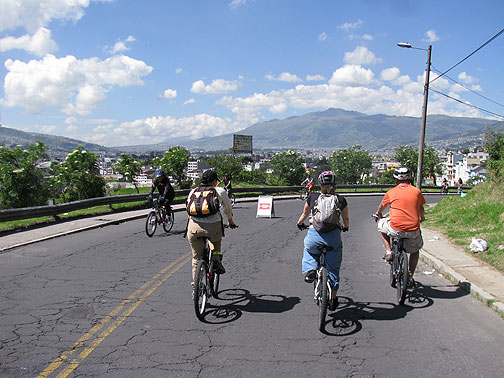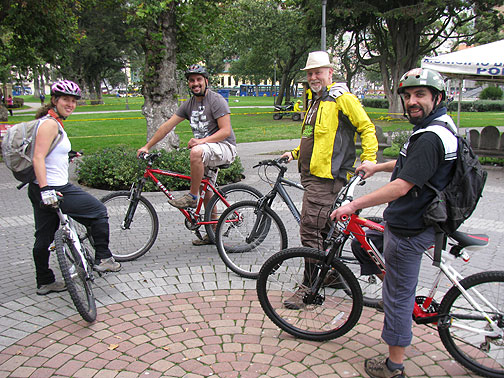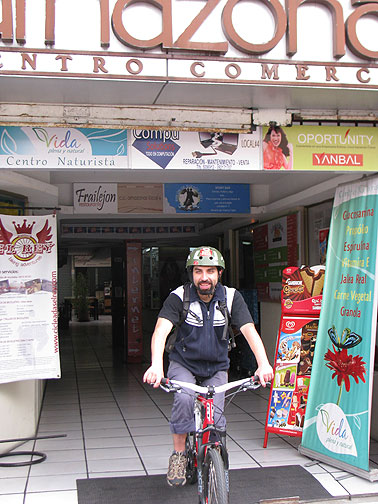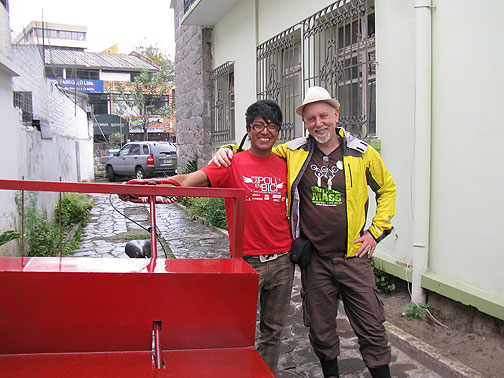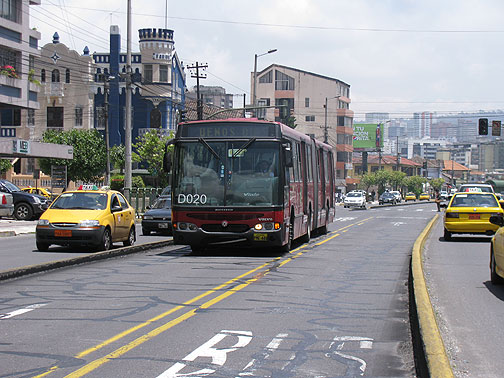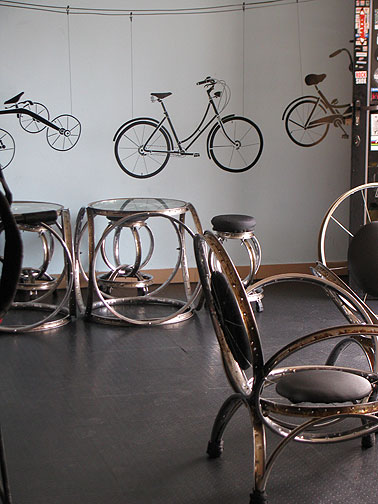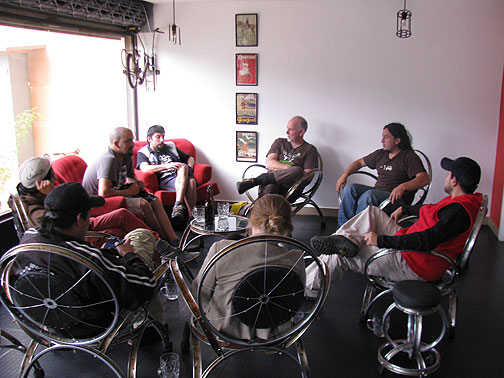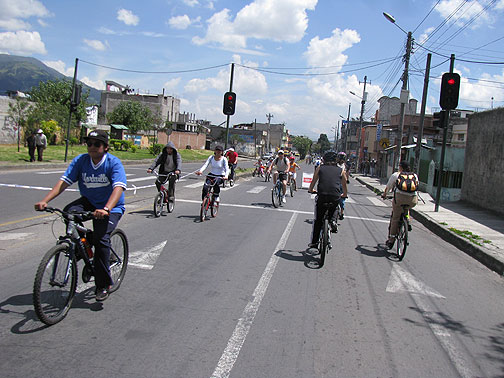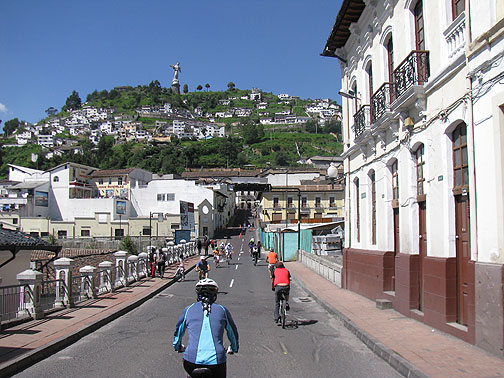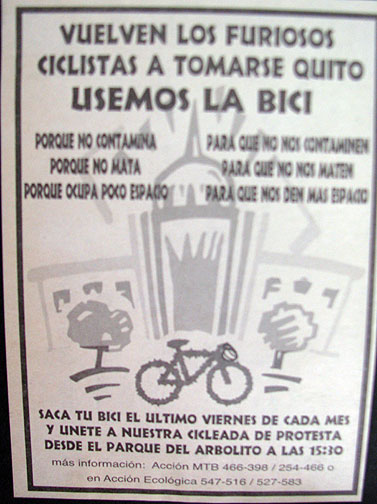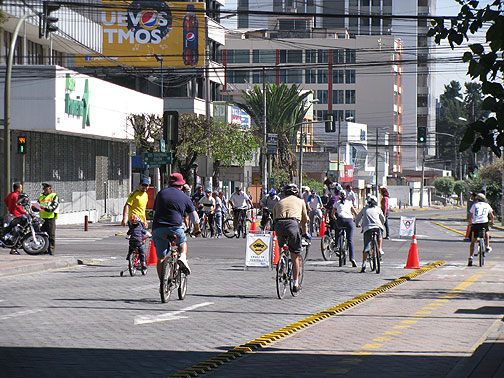
I just spent a few days in Quito, Ecuador, a remarkably beautiful city of a couple million sprawling 40 kilometers north-to-south through a series of valleys and plateaus in the Andes, surrounded by snow-capped volcanoes and rugged green mountains. I interviewed Heleana Zambonino from Quito for Streetsblog a while back, and wanted to see for myself the dynamic bicycling scene she described.
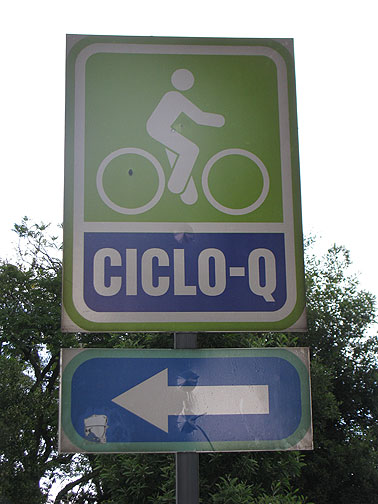
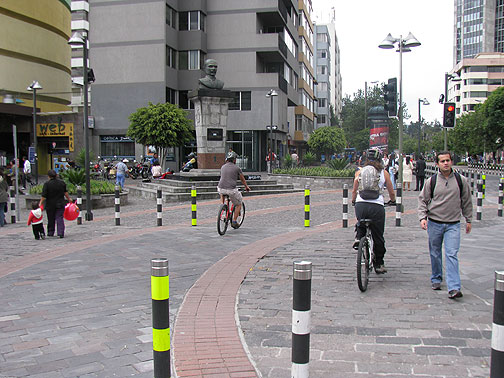
In fact, the ecology of bicycling in Quito is quite well developed. In two days we visited five distinct entities, all busily promoting bicycling and urban transformation in various ways. The first day started with Frank, Mashol, and Pablo giving us a tour of the historic center. Frank runs a small bike rental and tour business called Cicleadas del Rey and he’s been involved in many aspects of Quito’s burgeoning bike culture. He graciously loaned us bikes for our days in Quito.
After the historic tour, we rode back to the neighborhood where we started—Mariscal—and met Carlos Tacuri, a guy who started bicycle agitating in Quito when he was 14 (he’s now 32). He has a shop called Construbicis, the closest thing to a Bike Kitchen in Quito. He has designed his own frame (another paradoxical example of globalization: his bike frames are manufactured in Taiwan) and is now putting together local bikes there and he’s very open with his shop and tools.
From Construbicis we rode on one of the well-designed ciclovias that connect three university campuses in this part of Quito. Another common right of way many bicyclists use when they need to are the separated lanes dedicated to high-speed crosstown bus lines. Quito has three different routes, (Trole Bus, Ecovia, Metrobus), all running mostly north and south, which is one of the odd things to get used to for a North American in Quito. When you look at local maps you see the city arrayed from left to right—the City sits in an Andean plateau with lots of hills and doesn’t extend that far from east to west, but quite far from north to south. The maps are very wide and confusingly put north to the right and south to the left—proving again how much our image of space is shaped by the visual representations we grow up with.
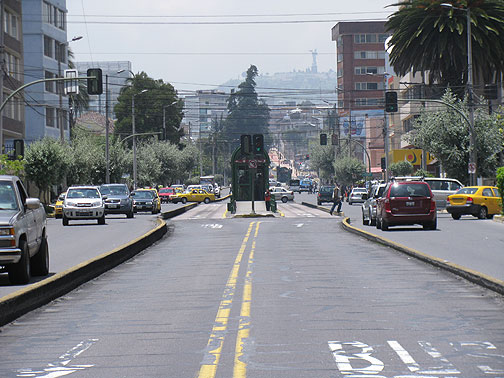
We made our way through a nice neighborhood to a sleek bar-café called La Cleta (the Freewheel), where we met a group called ABC, who later sent me a short manifesto called “El Pueblo Bicicletero Ec.” We had a nice discussion, sitting around in their bar on seats made of old wheel frames framed by their sharp silhouette paintings on the walls.
It was clear that they felt the bike scene in Quito had been co-opted by the local government, and a new initiative was needed to reclaim the momentum for urban transformation. These guys were the more lefty radicals of the bunch we met. In a side room they have a radio station “Radio Pedal, 102.9 FM” and they had me record a station ID for them, which was fun.
Here’s a quote from their new manifesto called “El Pueblo Bicicletero Ecuatoriano” (Ecuatorian Bicycling People):
El Pueblo Bicicletro Ecuatoriano is a space of reflection and bicycle political action. We recognize ourselves as a people that bicycles—as women, as workers, as recreational riders, urban cyclists, boys and girls, elderly, everyday working people, and others that use bicycles to move themselves from one point to another in the city or the country. The bike is not used only as means of transport but is also used in diverse working activities. The bike is not merely a means of movement but also a tool of work, as well as an instrument of transformation and political contestation. The actual structure of the city dehumanizes completely the relationship between the people and Mother Nature (Pachamama), so now we are here to take seriously pedestrians, cyclists, and to take it as seriously as we have until now the indiscriminate use of cars.
That night I gave a public Talk at a local university loosely based on a short history of California bicycling I wrote recently, and that went over well, thanks to my partner Adriana’s capable translation. I showed slides of Critical Mass from around the world and talked about 19th century Good Roads agitation, rubber and slavery, and the resurgence of bikes and politics with CM in the 1990s.
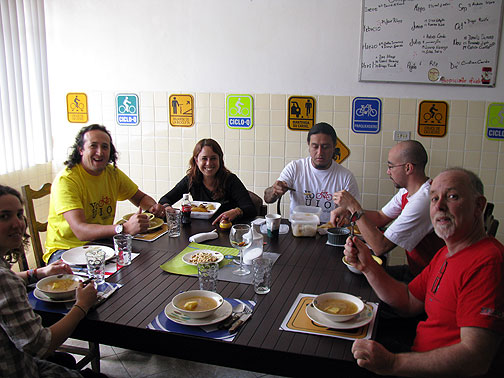
The following day we went to Ciclopolis for lunch. Ciclopolis is in a nice two-story building in central Quito where they have a half dozen staffers, a fleet of bicycles, and a major organizational focus on sustaining and running Cicleopaseo, the weekly closure of a 28-kilometer route through Quito every Sunday 9-1, for cyclists and others to use recreationally. They also run a program called Todas en Bici, which offers training to women and children on how to ride bicycles in city streets. As it happened, after meeting Belen at lunch we passed her in a taxi on Saturday morning while she was conducting her training ride on a ciclovia in the city center.
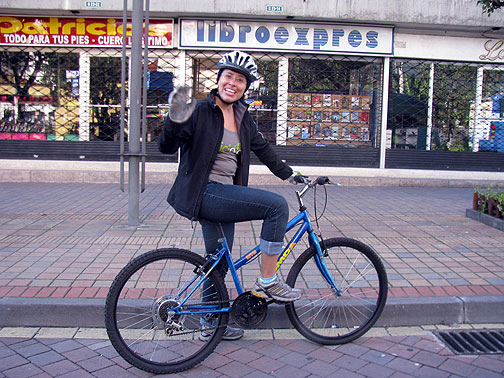
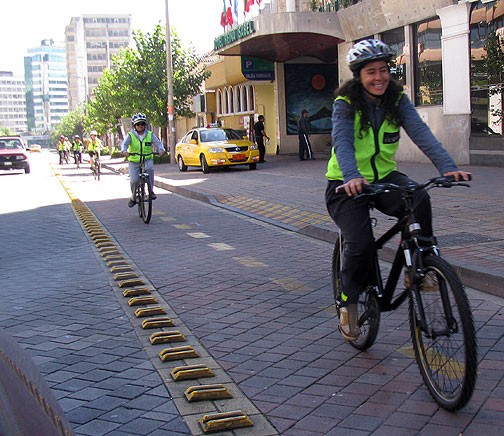
We had a spirited discussion Friday around the lunch table about leadership, facilitation, co-optation, government, electoralism, NGO/nonprofits, and much more. They’re a great bunch, but perhaps a bit stuck in their role as managers of Cicleopaseo. The Ciclopaseo is a lot like San Francisco’s Sunday Streets, but it happens EVERY Sunday all year long, and requires several dozen “stations,” hundreds of street closures, and a great deal of logistical support. We had a peek at their phalanx of radios, red cross bikes, trailers, barricades, etc.
After that we rode south a long way to get to the HQ of Biciaccion, the organization from which Ciclopolis split in 2007. It is Biciaccion, along with the folks at ABC and others who originally organized Critical Mass in Quito, long before they all ended up in different and somewhat alienated groups. (Diego from Ciclopolis had been a part of that long history too, and showed me some images in a scrapbook of early bike agitation in Quito. A group called Accion Ecologica was the precursor to all the bike activism in Quito back in the 1990s.)

Biciaccion is still going strong, with a fantastic website, and a series of campaigns around Ecuador to promote Cicleopaseos, bike training programs, ciclovias, and more. They also have a great website here.
There’s a complicated personal back story to some of the divisions among the Quito bicycling activists, including a broken marriage, competing electoral campaigns, and mutating organizational loyalties. But those dramas only underscore the healthy vitality and diversity of the bicycling community in Quito. In many respects they are far ahead of any city in the United States, even if they, like us, have a long way to go on our car-choked planet.
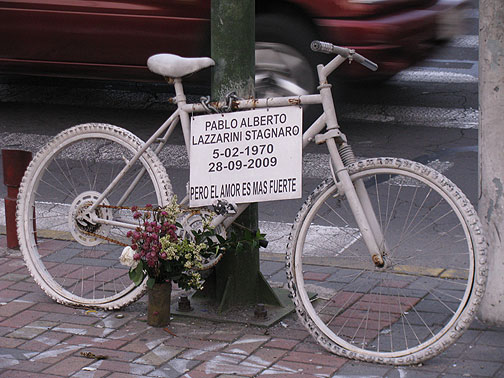
POSTSCRIPT: More South American news--
Heavy news from Porto Alegre, Brazil, where a bank executive drove at high speed through the February Critical Mass, sending almost a dozen to the hospital and mangling dozens of bikes. Video coverage and updates here.
On a lighter note, a massive Critical Mass took place in Buenos Aires, Argentina, even rolling on a local freeway. Video is up on Facebook.
